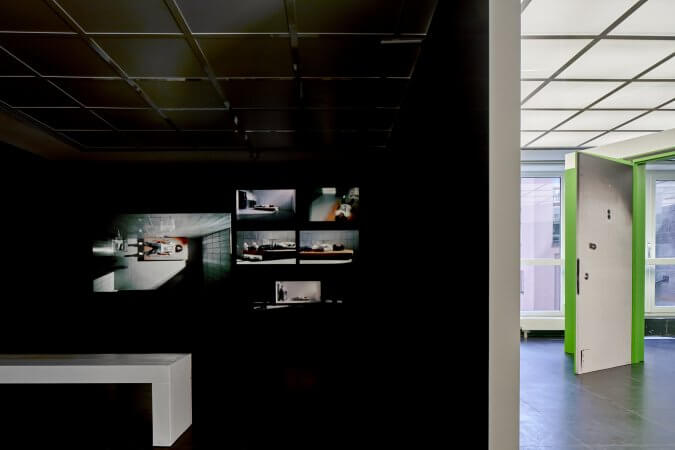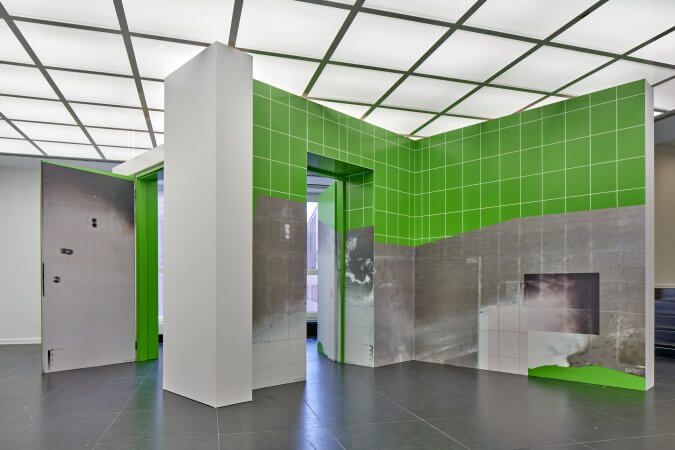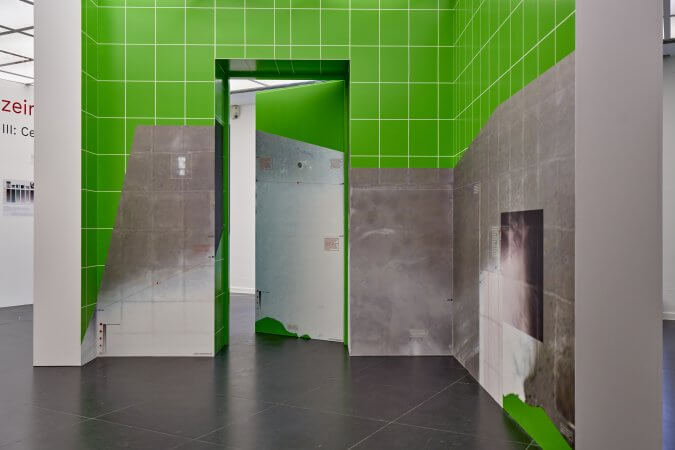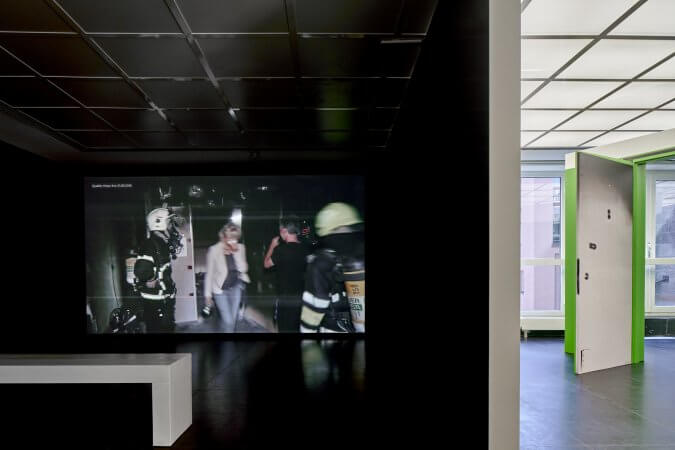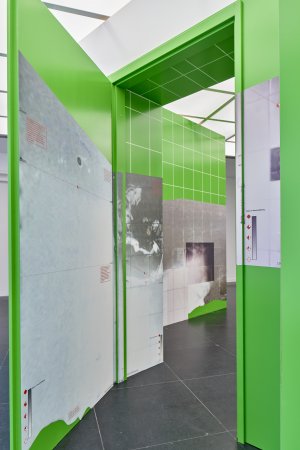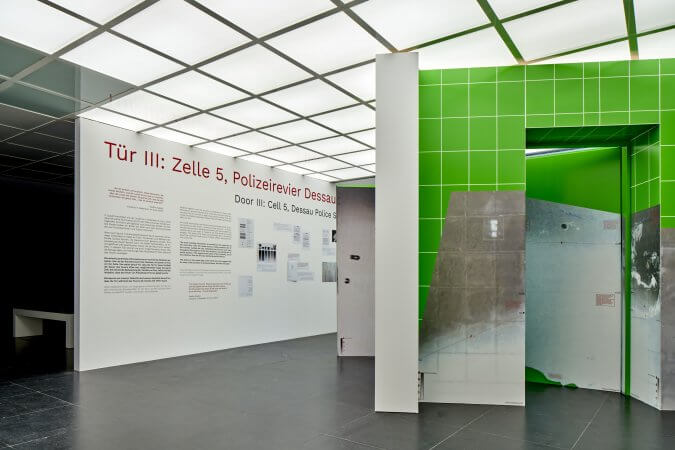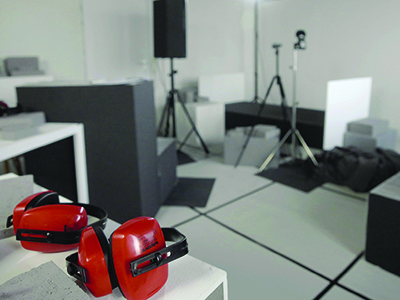Space dedicated to the Initiative in Gedenken an Oury Jalloh
THE MURDER OF OURY JALLOH
The third door in this exhibition is that of cell number 5 in Dessau police station, in Saxony-Anhalt. Behind that door, on the morning of 7 January 2005, Oury Jalloh burned to death.
Oury had been arrested on the street that morning. After being strip-searched and having his possessions taken, he was escorted to a cell in the basement, where he was lain on a mattress, his hands and feet tied to the wall and floor.
Hours later, sometime shortly before midday, a fire began in cell number 5. By the time it was extinguished around half an hour later, Oury was dead, his body severely burned.
According to official reports, the fire was started by a lighter which was only first found in an evidence bag three days after the police searched the premises.
In the years since his death, the Initiative in Gedenken an Oury Jalloh has commissioned various reports from international experts. An alternative explanation for Oury’s death is suggested by one of those reports, which showed that he had sustained severe bone fractures before his death, suggesting that the fire may have been set to cover up Oury’s murder.
Oury was the third person to have died in the custody of the Dessau police; the second in this very cell.
Forensic Architecture, London & Forensis, Berlin / Initiative in Gedenken an Oury Jalloh
17 YEARS OF SELF-ORGANISED INVESTIGATION INTO THE OURY JALLOH CASE
On 7 January 2005, Oury Jalloh, his hands and feet bound, burned to death beyond recognition in Cell 5 of the Dessau Police Station. From the outset, both police and the public prosecutor determined that Oury Jalloh started the fire himself. To date, however, they have not shed light on the actual cause of the fire and Jalloh’s death.
The film shows the timeline of continual work undertaken by the Initiative in Gedenken an Oury Jalloh, which, as part of the campaign Break the Silence, has fought for clarification and justice alongside the victim’s family, who live in Guinea, Africa. Besides protests over many years made to the relevant state prosecutors and judiciary, the campaign, which is self-organised and independent of authorities, consists above all of the action group’s efforts to seek out answers.
Since 2013, activists have been continually carrying out research, assigning international specialists with forensic expert opinions, and applying enormous pressure on the authorities concerned, backed up by critical public scrutiny. Moreover, in founding an International Independent Commission for Establishing the Truth concerning the Death of Oury Jalloh, the action group has brought together various experts from activist, scientific and legal fields, thus creating further expertise that is both top-notch and representative.
The collaboration with Forensic Architecture/Forensis is part of this independent investigative work, in which communal efforts by civil society activists to uncover state-condoned crime is driven forward in a systematic and exemplary way.
Initiative in Gedenken an Oury Jalloh
Film Credits
Mario Pfeifer, Forensic Architecture/Forensis, Left Side Media, Initiative in Gedenken an Oury Jalloh

